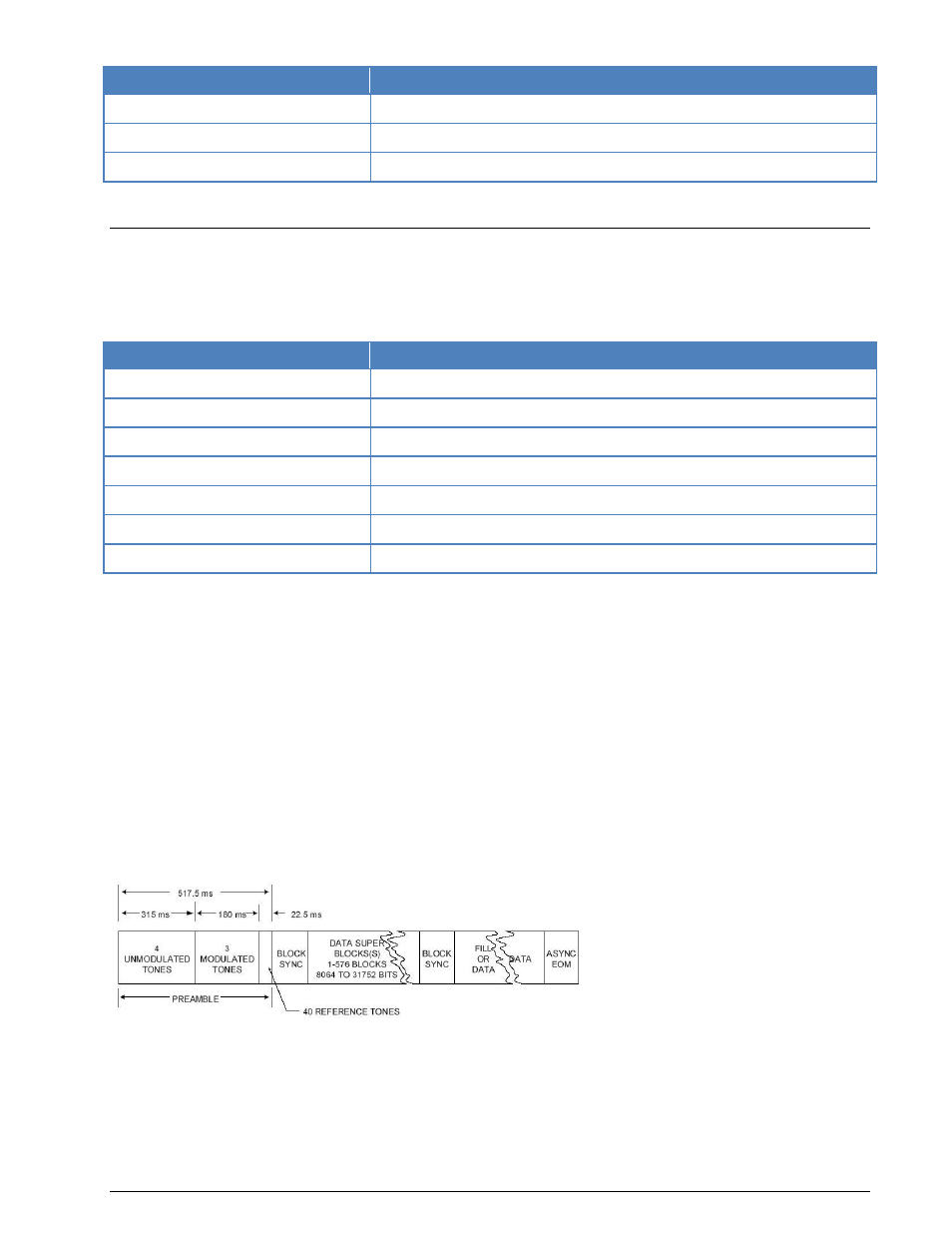Mil-188-110-39tone, (mil-188-110a/b appendix c) – Wavecom W74PC V8.7.0 User Manual
Page 194

184
Transmission Modes
WAVECOM Decoder W74PC, W-PCI/e, W-CODE, W-CLOUD Manual V8.7.0
Parameter
Value
Center frequency
1760 Hz
Receiver settings
DATA, CW, LSB or USB
Input format(s)
AF, IF
BINARY, HEX and ASCII output are provided.
MIL-188-110-39Tone, (MIL-188-110A/B Appendix C)
MIL-STD-188-110 39 Tone is a non-mandatory part of the MIL-STD-188-110 military standard for use by
all departments and agencies of the Department of Defense.
Parameter
Value
Frequency range
HF
Operation modes
PSK, Simplex
Modulation
39 tone Q-DPSK
Symbol rate
44.44 Bd
Center frequency
1800 Hz
Receiver settings
DATA, CW, LSB or USB
Input format(s)
AF, IF
Definition
The modulation technique used in this mode consists of differential quadrature phase shift keying (QDPSK)
of 39 orthogonal sub carriers in the range from 675Hz to 2812.5 Hz, and an additional unmodulated Dop-
pler reference tone at 393.75Hz.
The modulation speed (symbol rate) is always 44.44 Bd. Through the transmission of redundant infor-
mation on certain tones, different user data rates can be achieved within a range of 75 to 2400 bps.
This mode uses FEC and interleaving to combat the effects of fading, frequency shift, multipath, and burst
noise.
The user data is transmitted using a continuous frame structure with a variable block length (number of
symbols), depending on user data rate and message type.
Each transmission starts with a preamble, consisting of three phases, followed by block synchronization
and data segments. The data block immediately follows the next block synchronization segment defining
again the start of the next data block. This repeated frame structure enables synchronization of the de-
modulator at any time of transmission.
The end of transmission is determined by an EOM sequence (at least ten ones "1").
Data Display
There are two different types of data transmissions - synchronous and asynchronous.
In the synchronous data mode, the data is bit synchronously displayed as 7 bit characters, while in the
asynchronous mode, different character lengths are possible using start, stop and parity bits. The parity,